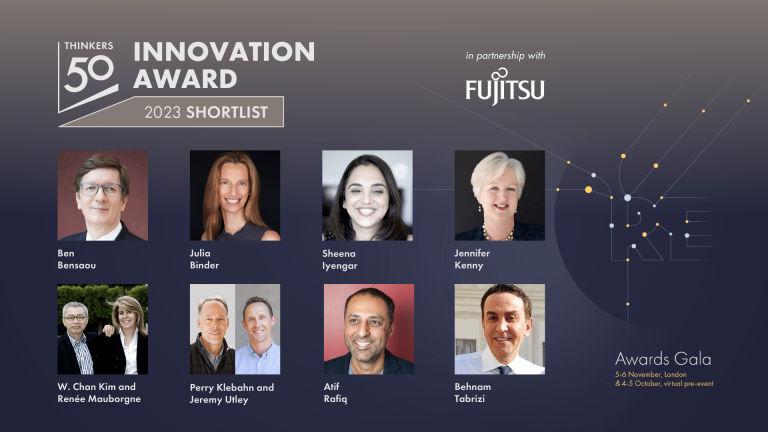

Before you set off on your innovation journey ask yourself the following questions:
One: Could it be simpler?
Says Navi Radjou: “In the West we have a tendency to make things complex. Why make things simpler when you can make it complex? That is the philosophy. So, I think the lesson is that we have to move away from what I call a ‘just in case’ engineering mindset, to a ‘just in time’ engineering approach.
“So what I mean by that is especially with more devices being connected in a Western context, the just in case is the fact that 90 percent of the features in a Microsoft application are never used because what the engineers do is they create features just in case we need them.
“So they think ahead of time — what are the different uses possible for the software, so they cram in all these potential features that may be required and they make this monster software which is very big and expensive and complex to use. A just in time approach is to say what is the bare minimum? What is the minimum feature that users need so that they can get value from the software? And then you focus on just that, and then you can incrementally add the software as required.”
The spirit of great innovation is often driven by an urge to simplify products, processes or services. Think of the beautiful simplicity of Apple’s design or Ryanair’s business model. Simplification is often disruptive.
Ask yourself: could your products, services and processes be simplified?
Two: How do you frame problems?
One of the issues picked up in Linda Hill’s research on innovation was that the fields of leadership and innovation were so separate, so siloed. But then there was another thing. She explained: “The other was that when we first went through the data, we picked up themes about the norms in the organizations, about how you’re supposed to interact with people or how you’re supposed to treat people. What we didn’t pick up on until we began to look a little bit more at the capabilities of these organizations was that there were also norms about how you’re supposed to think about a problem. So that was a surprise. As we tried to explain what we were seeing in certain settings, we said, ‘This isn’t about how you interact with people; this is really about how you frame and solve problems’. Because these organizations have some norms about how you’re supposed to think about problems, and that’s one of the things that allows them to get through the too-many-cooks-in-the-kitchen problem.”
The question to ask is does your organization have an established and efficient means of framing problems? Does it think too narrowly, too broadly?
Three: Is your thinking truly global?
Vijay Govindarajan’s experiences at GE convinced him of the critical importance of having an organization’s leaders getting out in the field to discover great people doing the most interesting things. “It is a cultural transformation, and it has to change at the top. And Jeff Immelt [GE CEO], to his credit, visits India and China, and he encourages the CEOs of various businesses to visit these countries.
“When Jeff Immelt sits with the premier of China and talks to him about what the key national priorities are, he gets firsthand information about the possibilities in China. Or when he meets with the CEOs of Indian companies, he begins to understand what it takes to win in India. That kind of firsthand understanding on the part of the CEO is the starting point for bringing about this cultural shift.
“I think only companies that have leaders with a global mindset will be able to win in this new era, where the opportunity has shifted from developed markets to developing markets. You see, historically, 15 years ago, global companies used to think of their global strategy in terms of the strategy for Europe, the United States, Japan, and the rest of the world. Today, and going forward, they have to think about their global strategy in terms of their strategy for the BRIC countries, the Middle East, Africa, and the rest of the world—and the rest of the world includes the United States, Europe, and Japan. That’s the mindset shift.”
Ask yourself: could you be more global in perspective? Are your innovative solutions being truly globally sourced?
Four: Have you talked to your customers?
Says Nilofer Merchant: “Customers are as much a part of the co-creation process, not just a recipient, and that the value chain construct is one of the past. Connected individuals can now connect to each other without the need for a large corporation to orchestrate their activities. Networks allow you to do what once only large centralized organizations could. If that’s the case, then what is the point of all these existing organizations? Networks change the nature of competition by changing who you are competing with.”
Customers have to be an integral part of your innovation process. They have to be with you.
Work by Jamie Anderson and his colleagues has turned Lady Gaga into an innovation role model. Key to her success, says Anderson, is her ability to develop unusually close relationships with her customers, her fans. For example, Lady Gaga will not allow professional photographers near her when she performs, but she encourages her fans to take pictures and videos and post them freely on the Internet. When a 10-year-old Canadian girl posted her own version of a song online, Lady Gaga watched it, praised it and invited the girl to perform with her onstage.
For her part, Lady Gaga explains: “There is something heroic about the way my fans operate their cameras. So precisely, so intricately and so proudly. Like Kings writing the history of their people, is their prolific nature that both creates and procures what will later be perceived as the kingdom. So the real truth about Lady Gaga fans, my little monsters, lies in this sentiment: They are the Kings. They are the Queens. They write the history of the kingdom and I am something of a devoted Jester.”
Ask yourself: are your customers fans? If not, why not? What can you do about it?
Five: Are you open enough?
Says Nilofer Merchant: “How do you stop thinking about your organization as a closed system. How do you invite others in? Whether it’s a customer or a partner or whatever. How do you break down those silos within and then ultimately your organization to allow all talent to play? Regardless of where people are in the world, regardless of whether or not they work for you.”
The question for all organizations is challengingly simple: are they truly open to new ideas? And, if not, why not?
This was originally published in What we mean when we talk about innovation by Stuart Crainer and Des Dearlove (Infinite Ideas, 2016).

Thinkers50 Limited
The Studio
Highfield Lane
Wargrave RG10 8PZ
United Kingdom

Thinkers50 Limited
The Studio
Highfield Lane
Wargrave RG10 8PZ
United Kingdom

Thinkers50 Limited
The Studio
Highfield Lane
Wargrave RG10 8PZ
United Kingdom
| Cookie | Duration | Description |
|---|---|---|
| LANG | 9 hours | Linkedin set this cookie to set user's preferred language. |
| nsid | session | This cookie is set by the provider PayPal to enable the PayPal payment service in the website. |
| sp_landing | 1 day | The sp_landing is set by Spotify to implement audio content from Spotify on the website and also registers information on user interaction related to the audio content. |
| sp_t | 1 year | The sp_t cookie is set by Spotify to implement audio content from Spotify on the website and also registers information on user interaction related to the audio content. |
| tsrce | 3 days | PayPal sets this cookie to enable the PayPal payment service in the website. |
| x-pp-s | session | PayPal sets this cookie to process payments on the site. |
| __cf_bm | 30 minutes | This cookie, set by Cloudflare, is used to support Cloudflare Bot Management. |
| Cookie | Duration | Description |
|---|---|---|
| l7_az | 30 minutes | This cookie is necessary for the PayPal login-function on the website. |
| Cookie | Duration | Description |
|---|---|---|
| CONSENT | 2 years | YouTube sets this cookie via embedded youtube-videos and registers anonymous statistical data. |
| _ga | 2 years | The _ga cookie, installed by Google Analytics, calculates visitor, session and campaign data and also keeps track of site usage for the site's analytics report. The cookie stores information anonymously and assigns a randomly generated number to recognize unique visitors. |
| _gat_gtag_UA_10408481_1 | 1 minute | Set by Google to distinguish users. |
| _ga_ZP8HQ8RZXS | 2 years | This cookie is installed by Google Analytics. |
| _gid | 1 day | Installed by Google Analytics, _gid cookie stores information on how visitors use a website, while also creating an analytics report of the website's performance. Some of the data that are collected include the number of visitors, their source, and the pages they visit anonymously. |
| Cookie | Duration | Description |
|---|---|---|
| NID | 6 months | NID cookie, set by Google, is used for advertising purposes; to limit the number of times the user sees an ad, to mute unwanted ads, and to measure the effectiveness of ads. |
| test_cookie | 15 minutes | The test_cookie is set by doubleclick.net and is used to determine if the user's browser supports cookies. |
| VISITOR_INFO1_LIVE | 5 months 27 days | A cookie set by YouTube to measure bandwidth that determines whether the user gets the new or old player interface. |
| YSC | session | YSC cookie is set by Youtube and is used to track the views of embedded videos on Youtube pages. |
| yt-remote-connected-devices | never | YouTube sets this cookie to store the video preferences of the user using embedded YouTube video. |
| yt-remote-device-id | never | YouTube sets this cookie to store the video preferences of the user using embedded YouTube video. |
| yt.innertube::nextId | never | This cookie, set by YouTube, registers a unique ID to store data on what videos from YouTube the user has seen. |
| yt.innertube::requests | never | This cookie, set by YouTube, registers a unique ID to store data on what videos from YouTube the user has seen. |
| Cookie | Duration | Description |
|---|---|---|
| DEVICE_INFO | 5 months 27 days | No description |
| loglevel | never | No description available. |
| m | 2 years | No description available. |
Thinkers50 Limited has updated its Privacy Policy on 28 March 2024 with several amendments and additions to the previous version, to fully incorporate to the text information required by current applicable date protection regulation. Processing of the personal data of Thinkers50’s customers, potential customers and other stakeholders has not been changed essentially, but the texts have been clarified and amended to give more detailed information of the processing activities.